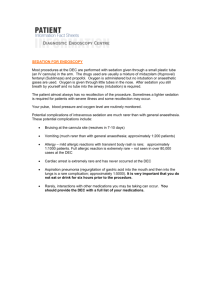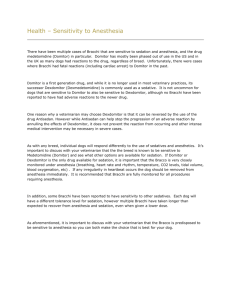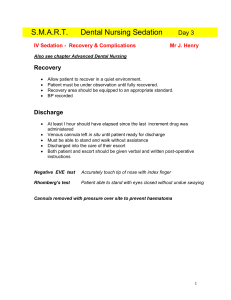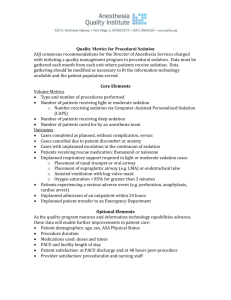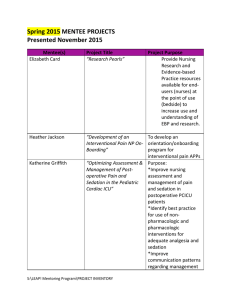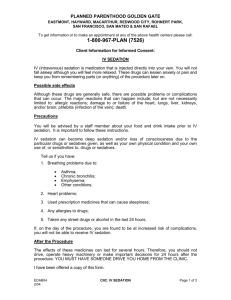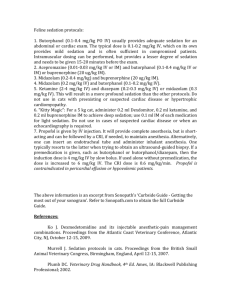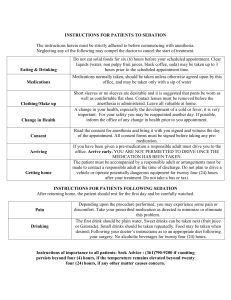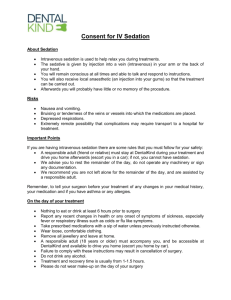Radiology Procedural Sedation EXCLUSION Criteria
advertisement
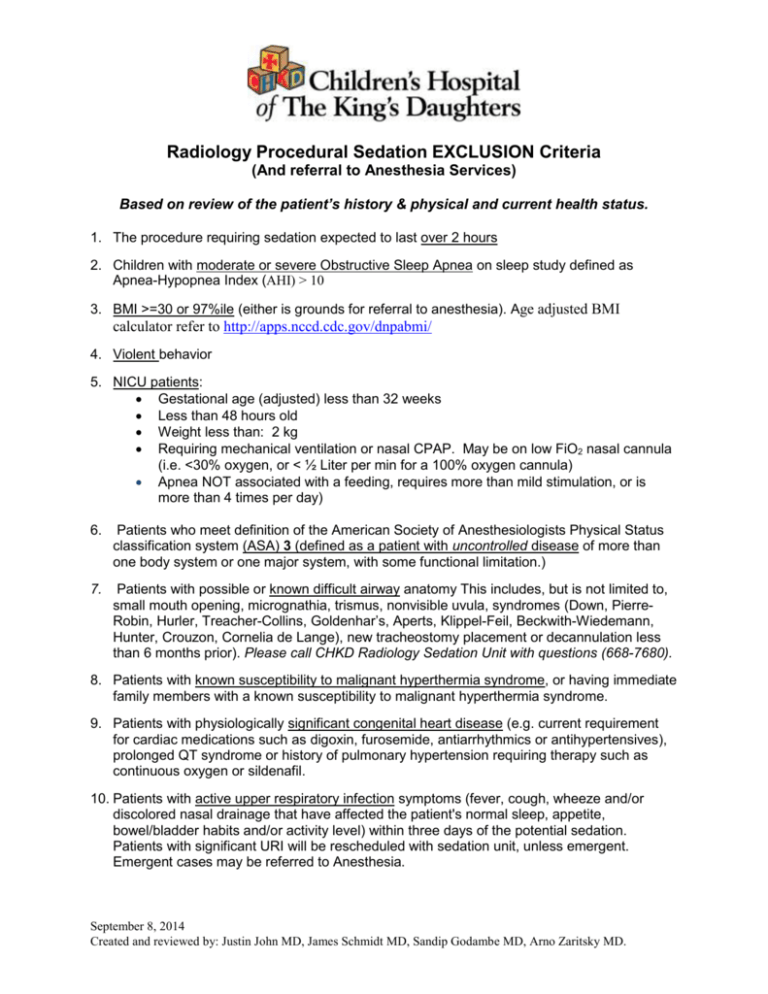
Radiology Procedural Sedation EXCLUSION Criteria (And referral to Anesthesia Services) Based on review of the patient’s history & physical and current health status. 1. The procedure requiring sedation expected to last over 2 hours 2. Children with moderate or severe Obstructive Sleep Apnea on sleep study defined as Apnea-Hypopnea Index (AHI) > 10 3. BMI >=30 or 97%ile (either is grounds for referral to anesthesia). Age adjusted BMI calculator refer to http://apps.nccd.cdc.gov/dnpabmi/ 4. Violent behavior 5. NICU patients: Gestational age (adjusted) less than 32 weeks Less than 48 hours old Weight less than: 2 kg Requiring mechanical ventilation or nasal CPAP. May be on low FiO2 nasal cannula (i.e. <30% oxygen, or < ½ Liter per min for a 100% oxygen cannula) Apnea NOT associated with a feeding, requires more than mild stimulation, or is more than 4 times per day) 6. Patients who meet definition of the American Society of Anesthesiologists Physical Status classification system (ASA) 3 (defined as a patient with uncontrolled disease of more than one body system or one major system, with some functional limitation.) 7. Patients with possible or known difficult airway anatomy This includes, but is not limited to, small mouth opening, micrognathia, trismus, nonvisible uvula, syndromes (Down, PierreRobin, Hurler, Treacher-Collins, Goldenhar’s, Aperts, Klippel-Feil, Beckwith-Wiedemann, Hunter, Crouzon, Cornelia de Lange), new tracheostomy placement or decannulation less than 6 months prior). Please call CHKD Radiology Sedation Unit with questions (668-7680). 8. Patients with known susceptibility to malignant hyperthermia syndrome, or having immediate family members with a known susceptibility to malignant hyperthermia syndrome. 9. Patients with physiologically significant congenital heart disease (e.g. current requirement for cardiac medications such as digoxin, furosemide, antiarrhythmics or antihypertensives), prolonged QT syndrome or history of pulmonary hypertension requiring therapy such as continuous oxygen or sildenafil. 10. Patients with active upper respiratory infection symptoms (fever, cough, wheeze and/or discolored nasal drainage that have affected the patient's normal sleep, appetite, bowel/bladder habits and/or activity level) within three days of the potential sedation. Patients with significant URI will be rescheduled with sedation unit, unless emergent. Emergent cases may be referred to Anesthesia. September 8, 2014 Created and reviewed by: Justin John MD, James Schmidt MD, Sandip Godambe MD, Arno Zaritsky MD.
